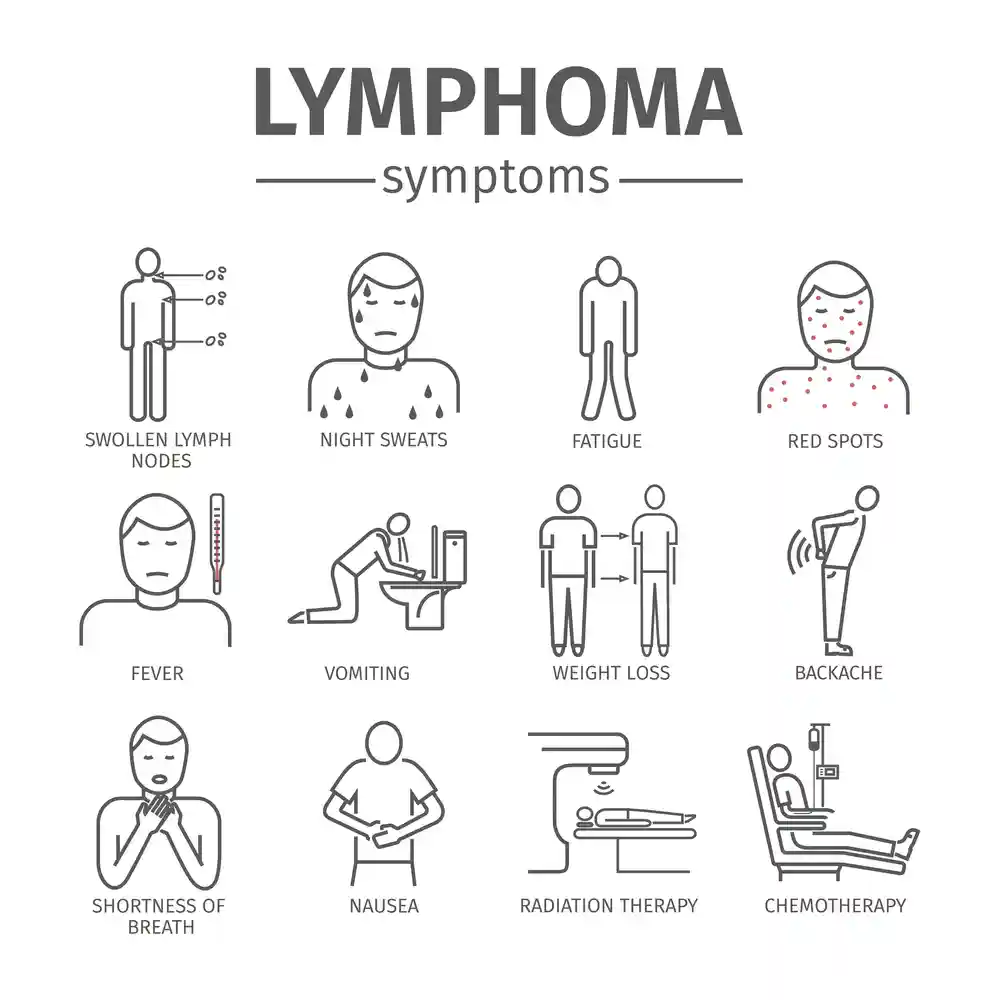2) B symptoms of lymphoma

They are also called constitutional symptoms and they occur in a minority of cases. They are the same as those occurring in leukemia and are usually attributed to an inflammatory reaction resulting from the destruction of cancer cells or due to a variety of chemical substances released from cancer cells. They include:
- Night sweating, which tends to be so sever that the patient wakes from their sleep drenched in sweat.
- Unexplained weight loss of more than 10% of body weight in the past 6 months. Other causes of weight loss have to be excluded before judging it as unexplained. Weight loss in cancers reflects the great demands of cancer cells for energy and their deprivation of other parts of the body from it.
- Fever: There are varieties of fever patterns in lymphoma, but the most common in Hodgkin’s lymphoma is what we call Pel-Epstein fever which is a period of fever exceeding 38 Celsius (100.4F) for about one week followed by another week without fever and then the fever returns again for another week and so on. Fever reflects the increased rate of metabolism of the body resulting from the rapid uncontrolled division of cancer cells.
